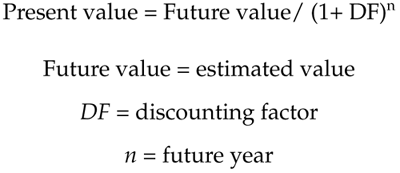Analyzing Project Costs
| It should be noted that for all cost calculations, categories, and other related issues, project managers should consult with the finance or accounting experts in their own organization. In projects, there are typically two types of costs:
The calculations of recurrent costs that would normally be the number of people (business and IT) involved in the project is dependent on the estimates produced in the planning session. Capital costs would also be identified during the planning session. In some organizations all costs are based on actual salaries rather than using costs such as accommodation, use of office supplies , superannuation, or pensions and bonuses, which are often treated as sunk costs. However, in some organizations, on costs can be 100% salary and higher. Use of computer time may also be treated as a sunk cost unless a specific piece of hardware or software is required for the project. Let's assume that your project planning process has determined that two programmers will be required for two months to develop a system that will meet your client's requirements. Let's also assume that a new PC must be purchased for a manager to enable him or her to access some data. The recurrent cost of development ( assuming the programmers are paid $50,000 per year) is $15,152. The capital cost for the dedicated PC is $8,000. The development cost is $23,152 and total cost, including support over five years, is $46,304. Future and Present ValuesBefore the costs and benefits can be compared, the financial estimates have to be converted using discount cash flow analysis or present value calculation. In effect, a dollar today is worth more than a dollar in two years. This technique converts all future dollar values to a common baseline ”present value. In effect, $1 today is not worth the same as $1 in 2 years. So the $1 (future value) has to be discounted to reflect inflation, interest rates, or some other discounting factor back to a present-day value. In most organizations, all benefits and cost figures for a project are projected forward for at least three years; therefore the use of present value calculations is essential. In addition, you'll need to determine the discounting factor for your organization. Typically, the discounting factor or discount rate is based on the weighted average cost of capital (WCCC). This represents the relative cost of borrowing or raising money for the organization. However, other organizations may use other rates (e.g., the treasury bond yield), so, as previously stated, the project should consult the organization's accounting experts to obtain the prevailing discounting factor. The technique for converting future values to present values is: For example, let's assume that we gain a benefit of $10,000 in two years and that the discounting factor is 9%. The present value of that return is: Of course, you do this for both benefits and costs. |
EAN: 2147483647
Pages: 136
